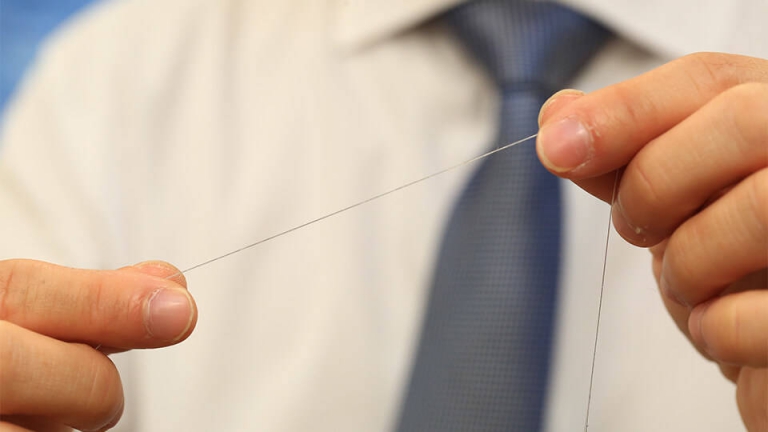News Highlights
- NUS Ultra-thin Microfiber Sensor Project that Serves the Real-time Diagnosis was Selected to the Top 100 Science Spinoffs. NUS Ultra-thin Microfiber Sensor Project that Serves the Real-time Diagnosis was Selected to the Top 100 Science Spinoffs.

The ultra-thin microfiber sensor for real-time healthcare diagnosis was selected to the Top 100 Science Spinoffs and has entered 2% out of 5,000 global science spinoffs based on the following criteria: uniqueness of the technology/product, high commercial potential and positive impact to the humanity’s well-being. Lead by Professor Lim Chwee Teck, invented a flexible microfibre sensor for real-time diagnosis. The thickness of this device is as the thickness of the human hair, which makes it a universal medicine tool for diagnosing and monitoring a wide range of diseases. This innovational technology includes a sensing element produced from a liquid metallic alloy, which is wrapped in a soft tensile silicone microtube. It has the ability to measure a patient’s pulse waveform information in real-time that usually used to gauge the individual’s heart rate, blood pressure and density in blood vessels. Professor Lim Chwee Teck mentioned that this innovative microfibre device can hardly be felt on the skin. Despite the fact that it is extremely thin and flexible, it also has excellent conductive abilities and can highly deform according to the bends of the skin. It can adapt to all the curves of the skin very well. Scientists have already proved the device for real-time monitoring.The results of this experiment are very encouraging.
One of the significant possibilities for using is the detection of atherosclerosis that is characterised by thickening of the arteries, which is due to the fat congestion of fatty particles. Such particles can form plaques, which leads to severe venous diseases, organ diseases, its failure, and even heart attack or stroke. The presence of plaques negatively changed the density of the vessels, thus the pulse waveform, that identified by the device, can determine healthy or indurated artery. The basis of this invention is transparent, biocompatible, highly deformable microtubes that have the ability to customizable to various sizes and cross-sectional geometries. Furthermore, the device can be put into a glove that is worn by doctors to detect necessary symptoms of the patient, thereby rejecting the need for various equipment to supervise heart rate and blood pressure. The invention, based on soft tubular microfluidics, provides a simple, cheaper, and faster solution for users lacking proficiency and access to cleanroom facilities to make an accurate diagnostic. Moreover, this invention can be available in various medical institutions, because it is cheap in production.
Researcher / Author: Yu Longteng, Trifanny Yeo and Lim Chwee Teck.
https://spinoff.com/micsensor
The ultra-thin microfiber sensor is partly sponsored by HiFES research programme.
For full publication paper, email: hifes@nus.edu.sg
- Home
- NUS Ultra-thin Microfiber Sensor Project that Serves the Real-time Diagnosis was Selected to the Top 100 Science Spinoffs. NUS Ultra-thin Microfiber Sensor Project that Serves the Real-time Diagnosis was Selected to the Top 100 Science Spinoffs.
Singapore Hybrid-Integrated Next-Generation μ-Electronics (SHINE) Centre
- Block E6, #E6-5-3, 5 Engineering Drive 1, Singapore 117608
- +65 6601 8522
- shine@nus.edu.sg

